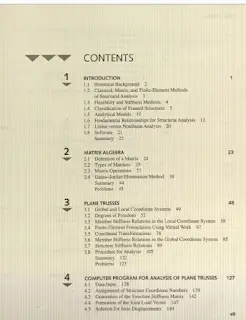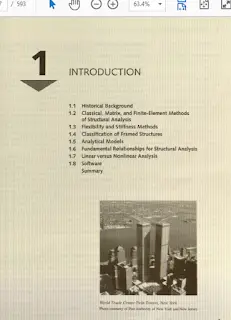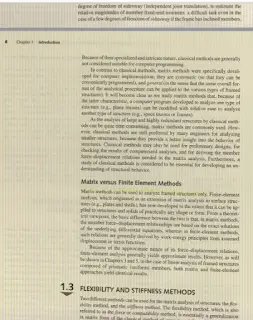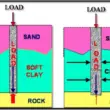a. Stresses or stress resultants (i.e. axial forces, shear forces and bending moments)
b. Deflections
c. Support reactions
Thus the analysis of a structure typically involves the determination of these quantities as caused by the given loads and /or other external effects. This text is devoted to the analysis of structure.
In most design offices today, the analysis of framed structures is routinely performed on computers, using software based on matrix methods of structural analysis. It is therefore essential that structural engineers understand the basic principles of matrix analysis, so that they can develop their own computer program and / or properly use commercially available software – and appreciate the physical significance of the analytical results.
Title of the Book
Matrix Analysis of Structures
Author of the Book
Aslam Kassimali
Contents of the Book
2. Introduction
a. Historical Background
b. Classicial, Matrix and Finite-Element Methods of Structural Analysis
c. Flexibility and Stiffness Methods
d. Classification of Framed Structures
e. Analytical Models
f. Fundamental Relationships for Structural Analysis
g. Linear Versus Nonlinear Analysis
h. Software
i. Summary
3. Matrix Algebra
a. Definition of Matrix
b. Types of Matrices
c. Matrix Operations
d. Gauss-Jordan Elimination Method
e. Summary
f. Problems
4. Plane Trusses
a. Global and Local Coordinate Systems
b. Degree of Freedom
c. Member Stiffness Relations in the Local Coordinate System
d. Finite-Element Formulation Using Virtual Work
e. Coordinate Transformations
f. Member Stiffness Relations in the Global Coordinate System
g. Structure Stiffness Relations
h. Procedure for Analysis
i. Summary
j. Problems
5. Computer Program for Analysis of Plane Trusses
a. Data Input
b. Assignment of Structure Coordinate Numbers
c. Generation of the Structure Stiffness Matrix
d. Formation of the Joint Load Vector
e. Solution for Joint Displacements
f. Calculation of Member Forces and Support Reactions
6. Beams
a. Analytical Model
b. Member Stiffness Relations
c. Finite-Element Formulation Using Virtual Work
d. Member Fixed End Forces Due to Loads
e. Structure Stiffness Relations
f. Structure Fixed Joint Forces and Equivalent Joint Loads
g. Procedure for Analysis
h. Computer Programs
7. Plane Frames
a. Analytical Model
b. Member Stiffness Relations in the Local Coordinate System
c. Coordinate Transormations
d. Member Stiffness Relations in the Global Coordinate System
e. Structure Stiffness Relations
f. Procedure for Analysis
g. Computer Program
h. Summary
i. Problems
8. Member Releases and Secondary Effects.
9. Three Dimensional Framed Structures
10. Special Topics and Modeling Techniques
11. Computer Software
12. Flexibility Method
13. Bibliography
14. Answers to Selected Problems
15. Index
Preview of the Book
Like Us on Facebook!
Download the Book
Subscribe Us on YouTube!
The Content is for Members Only !!!
This Book is available to download for our Bronze, Silver & Gold level Members you can simply click the button below to signup / login for your membership and download the book now. Download this Book
Note: The book and its contents are copyrighted by the respective authors we here are providing services just like scribd. The book is NOT here free to download. If you think the link is wrong and must not be provided you can contact us for immediate shutdown of the link.


















